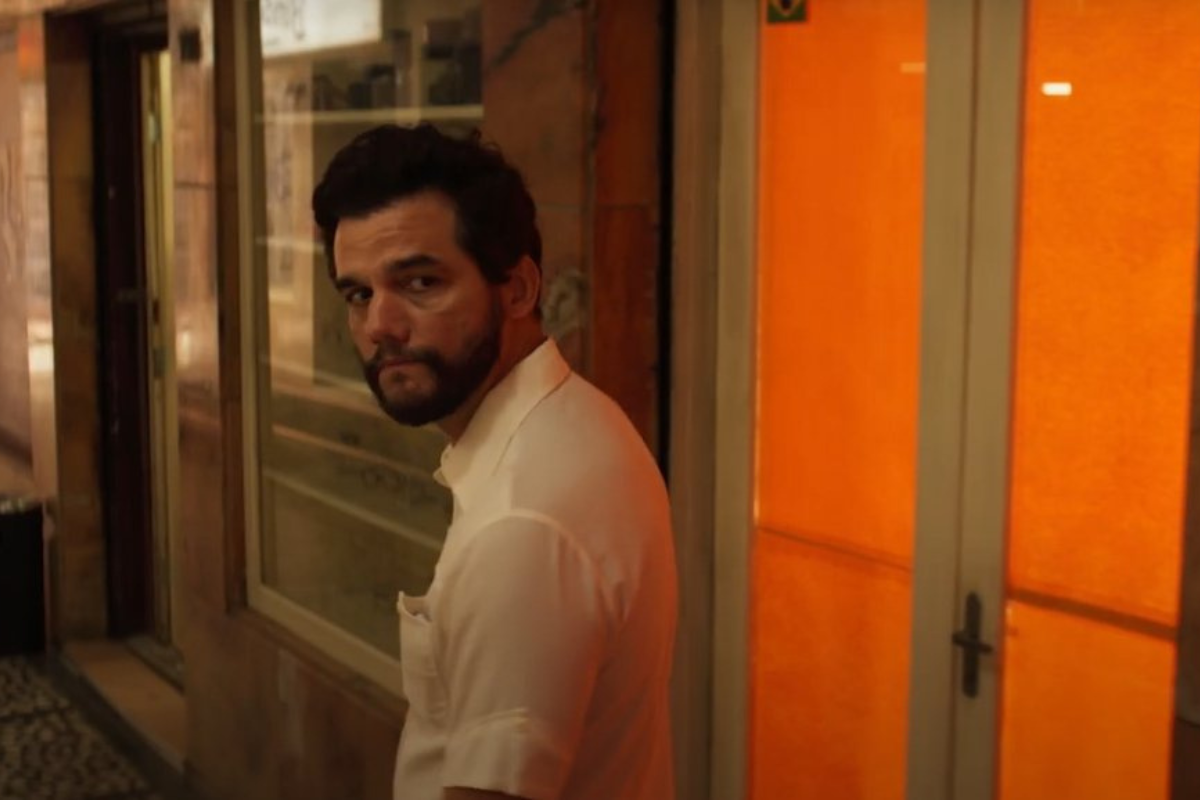UNDERSTANDING SCREENWRITING: More Than the Usual Grab Bag of Stuff
Script contributor Tom Stempel gets in at least one highly touted new film, ‘The Power of the Dog’; some more on the TV miniseries ‘Impeachment,’ one book on ’12 Angry Men’ and another on Darryl F. Zanuck, and then a slight dig at the new Academy Museum.
The First Hour…and then the Second Hour.
The Power of the Dog (2021. Screenplay by Jane Campion, based on the novel by Thomas Savage. 126 minutes)
You may think you know where you are as the movie opens. We are in the middle of a cattle drive in the American West. Well, you are sort of half right. It is a cattle drive, just like we have seen in many American movies (and with enough cattle so that Jane Campion, who directed as well wrote the script, could afford to lend Kelly Reichardt a couple of head if she wants to make Second Cow; see my review of First Cow (2019) here to find out what that is all about). It is supposed to Montana in 1925, but it was shot in Campion’s native New Zealand. The locations look believable enough, and there is not a Hobbit in sight.
So we might expect the man leading the herd to be John Wayne. Well, he isn’t and he is. He is Phil Burbank, and he is a tough boss in the Wayne mode. But he is not written, directed, or acted in the Wayne way. In the writing he is not only tough, but a touch psychotic. He is played by Benedict Cumberbatch, stretching himself as an actor. He gets all the nuances of Phil, which the American actors playing similar parts did not do. In American films, made by male directors, such tough-guy characters are admired, perhaps with an occasional minor reservation or two. Campion finds nothing at all admirable about him.
The windswept town where they are bringing the cattle is the railhead where they will put them on the train. Given Campion’s limited budget, all we see of the railroad is a very short set of tracks. Phil and his crew eat at the one restaurant in town where Phil makes fun of young Peter Gordon, the waiter, for what Phil takes as his being effeminate. Peter is, according to those who have read the book, is the son of the cook, Rose Gordon. In the film he goes out to the gravestone of his father, which I read as him being the father of both Rose and Peter, which would make Peter Rose’s brother. The rest of the dialogue is ambiguous about this point, given an odd choice on Campion’s part, since she is usually very conscientious about details.
Phil’s brother George is Phil’s polar opposite: quiet and sensitive. He goes back to the restaurant and apologizes to Rose for Phil’s behavior. We later learn George has married Rose, and is moving her to the ranch. This upsets Phil, who performs a bunch of micro-aggressions on Rose. And then, an hour into the film, George brings Peter out to the ranch to live with them.
My first reaction to that was, great, a little plot, or plot-like substance, since most of the first hour has been exposition. This is the point to develop the plot. But it does not work that way. Phil seems to be interested in teaching Peter how to “be a man,” and Peter seems to be willing to learn. We might expect traditional “making you a man” scenes that show up in a lot of westerns (the series Yellowstone this season has a storyline about Jimmy, who is kicked off the Dutton ranch and is learning how to be a cowboy at other ranches), but we don’t get those scenes.
And we are losing track of Rose and George. Rose is turning into an alcoholic; Kristen Dunst, who is wonderful in the first hour, is now just yelling and staggering around the ranch looking for a bottle. George virtually disappears from the movie. The first hour of the movie has been a very nuanced look at Phil, George, and Rose, and we lose that in the second hour.
Peter discovers something secretive about Phil, but does not appear to do anything about it. What he discovers suggest the story may be going in a certain direction, but then it does not. But then it does, but when it gets to a crucial scene in that storyline, the scene is cut short, and we have to guess what happened. That is true of a lot of the last hour of the film, and which makes it very, very…frustrating.
As I Was Saying...
Impeachment: American Crime Story (2021. Developed for television by Sarah Burgess, based on the book A Vast Conspiracy by Jeffrey Toobin. 10 episodes)
Two columns ago I did a short item on this one and the miniseries Scenes From a Marriage. I put them together because they had the same problem: the acting was spectacular, but the writing was not. They both became actors’ exercises.
I had thought when I wrote about the first five episodes of Impeachment that it was only going to be six episodes long. I discovered it was going to be ten, so I made the effort to watch all ten.
Beanie Feldstein as Monica Lewinsky and Sarah Paulson as Linda Trip continue to be great, but the series expands to include other characters, such as several of the political figures involved. Unfortunately, the writing of these characters is not as sharp as it needs to be. Part of the problem is that the show does not appear to want to take a hard stand on the characters. There are two ways they could have gone: the Republicans’ view that they are doing God’s work, or the Democrats’ view that it was all a witch hunt. I tend to side with the Dems on this one, but they could have attempted to do it the other way around. I would not have believed it for a minute, but it would have been interesting to see.
We do get more plot, and plotting, in the second five hours, but it does not work as well as it could because of the lack of focus. For example, one of the anti-Clinton people is Ann Coulter. She is played by Cobie Smulders, late of How I Met Your Mother. Smulders may just be too likeable to do Coulter justice, and neither she nor the writing get the feral wolf quality Coulter is noted for. Likewise, Kenneth Starr, the independent counsel, investigating Bill Clinton’s financial and other activities, comes across as a block of wood.
Bill and Hillary Clinton show up in the second five hours, but neither of them are convincing. Clive Owen plays Bill without any of his charm. Edie Falco gives an interesting performance as Hillary, but not an entirely believable one.
One problem the shows’ creator had comes from their lack of focus. “Impeachment” is part of the series American Crime Story, but the creators have not decided what the crime was. Was the crime Bill Clinton’s, or was it the Republicans desperation to get back the presidency?
Very Good…
Reginald Rose and the Journey of 12 Angry Men (2021. Book by Phil Rosenzweig. 315 pages)
You have all read books about the making of a single film. The market is full of them. Rosenzweig takes a much wider view. He starts with the background of Reginald Rose, the author. We all know what happened: Rose told everybody he got called for jury duty in New York City. He served on a murder trial and realized the deliberations of a jury would make a good one-hour television show, which is what the live anthology dramas were in the early fifties.
Uh, wait a minute, here is Rosenzweig’s first big twist. Rose did not serve on the jury for that trial. Or for any other trial. He was called for jury duty, but never picked for a jury. But he was a writer and used his writer’s imagination. This tells you that Rosenzweig is a terrific researcher. He has written several other books, but this is his first on television and film. He’s done his homework.
He also recreates for us the days of early live television, and then goes into even more detail on the making of the film, one of a number of films in the mid-50s that evolved from live television dramas. By the time he gets to the end of the film shoot, you will feel that you have sweated through the whole experience with the cast and crew.
Rosenzweig takes us through the various drafts of the TV and the film script. Rose’s original TV script was too long, but it gave him material to add back in for the film.
Some books on a single film have a short chapter about the afterlife of the film. Rosenzweig does more than that. He follows the film as it is released; it was not a big commercial or popular success, but one of the surprises of the book is that the film did make a slight profit. Its reputation grew, and it is now more highly thought of than some of the bigger films of its day. Rose prepared a stage version of the film, and there have been productions of the play all over the world, including in countries where you might not expect it.
Needless to say, lawyers have studied it in great detail. I have served on several juries, and when the lawyers discover I taught film history and screenwriting, they always ask me about it. The film is taught in law schools.
And elsewhere. I will leave you to discover where by the end of the book, one of Rosenzweig’s interesting surprises.
Now you may ask, Tom, given that you have been on juries, how accurate is 12 Angry Men in its portrayal of jury life?
I hate to tell you, Reggie, but it is nothing like real jury duty.
For a more accurate look at jury duty, go find on your streaming service the “Doubt” episode (ep. 8.5) of The Good Wife. That’s how real juries behave.
And Not So Good…
20th Century-Fox: Darryl F. Zanuck and the Creation of the Modern Film Studio (2021. Book by Scott Eyman. 295 pages)
I knew when I first saw the page for this book on Amazon that there was not a lot of hope for it. It said the book was 304 pages. Eyman’s previous biography of Louis B. Mayer of MGM was 596 pages. There is more than enough material on Zanuck and Fox for nearly 600 pages or more.
Oh, did you notice that the number of actual pages in this book is only 295?
The book is as shallow as you might imagine. Eyman has used mostly material from other books, and then not too many of them. On the 20th Century-Fox shelf in my study, I have 23 books (and many others that mention Fox and Zanuck on my screenwriters’ shelves). Eyman references only 10 of those, although there is one he uses that he does not reference. He has a number of quotes that he does not footnote.
Eyman has, like many writers about film, written mostly about directors, but even here there are directors who worked at Fox that he hardly mentions. There is no indication he looked at the books on Henry King. And Eyman writes about Tyrone Power, without apparently ever having read the two biographies in print about the star.
I could go on at great length on the flaws of this book, but the one that is appropriate for this column is how little he deals with screenwriting. He does not refer to the two biographies of Nunnally Johnson nor to the memoirs of Philip Dunne. They are two of the most important screenwriters at Fox in its heyday. Eyman does not refer to Ben Hecht’s A Child of the Century, which includes Hecht’s description of Zanuck at work. It’s the definitive portrait of Zanuck.
One of Zanuck’s great skills was his focus on story and script. We get very little of that, partly because Eyman apparently never looked at the Fox story files, which are now at the University of Southern California. There is an enormous amount of material there that would be essential for writing a real book on Darryl F. Zanuck.
Not Yet.
You may have heard that the Academy of Motion Picture Arts and Sciences opened its museum of film in September. There was an enormous amount of hype about it (a special section of the Los Angeles Times, a TV special on ABC, etc.)
No, I have not gone yet. A former student of mine, Henry Stanny, who produces wonderful concerts of film music, went shortly after the opening, and he assures me there are actually a few things about screenwriters. I am sure I will go eventually.
The hype for the opening turned me off, as excess hype tends to. Part of what bothered me is the emphasis on diversity. That may seem odd to you since you may know that I taught at Los Angeles City College for forty years; LACC has the most diversified student body you can imagine: students from every continent except Antarctica; students ages from 14 to their seventies [and maybe in their eighties]; representatives of all five major sexual orientations and several of the minor ones. I love diversity, but I would have thought they might have included a white guy or two. The first big exhibit is devoted to the Japanese animator Hayao Miyazaki. The first screen series is the films of Haile Germia, an Ethiopian filmmaker who works independently in the United States. Another big exhibition is devoted to Spike Lee.
Two points. One is that there were a LOT of white guys who made major contributions to the history of American, especially Hollywood, films. Just ask Scott Eyman.
Two, if the Academy expects this to be a big American tourist attraction, will American tourists be excited by Miyazaki and Germia, or will they will they be asking where the big stars are? Or the big directors? Or, dare I say it, the big screenwriters?
Here are two suggestions that can keep the theme of diversity. One: an exhibition on women screenwriters. Two: a film series called “Indians and Cowboys,” showing how American Indians have been shown in both good and bad ways. You’re welcome.
Learn more about the craft and business of screenwriting from our Script University courses!
Tom Stempel is a Professor Emeritus at Los Angeles City College, where he taught film history and screenwriting from 1971 to 2011. He has written six books on film, five of them about screen and television writing. You can learn more about his books here. His 2008 book Understanding Screenwriting: Learning from Good, Not-Quite-So- Good, and Bad Screenplays evolved into this column. The column first appeared in 2008 at the blog The House Next Door, then at Slant, and then Creative Screenwriting before it found its forever home at Script.
In the column he reviews movies and television from the standpoint of screenwriting. He looks at new movies, old movies, and television movies and shows, as well as writing occasional other items, such as appreciations of screenwriters who have passed away, plays based on films, books on screenwriting and screenwriters, and other sundries.
In September 2023 Tom Stempel was awarded the inaugural Lifetime Achievement in the Service of Screenwriting Research by the international organization the Screenwriting Research Network.






